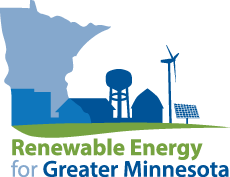If your farm has ever had demand charges on your utility bill, you know that they can have a dramatic impact on cost. Fortunately, there are easy ways to avoid demand charges. This blog post walks you through a basic understanding of demand charges and then offers key tips to keep your bills lower.
What are demand charges?
Every utility in Minnesota classifies their customers into different electricity rate structures to pay for the electric grid and power generation. Typically, customers are classified into farm/residential, commercial, and industrial categories. Large commercial and industrial customers—including many farm facilities with equipment like grain dryers and irrigation pumps that rely on large volumes of electricity—are often placed on “demand accounts” and pay “demand charges” in their monthly bills.
Customers on demand accounts see monthly energy bills with two electrical charges. One charge covers electrical consumption, the total electrical usage in kilowatt hours (kWh). The second charge covers demand, which captures the peak capacity in kilowatts (kW) only. In other words, the consumption charge is for the amount of electricity a customer uses over time and the demand charge is for the infrastructure capacity—or bandwidth—to provide a large amount of electricity instantaneously.
Electric utilities measure demand with demand meters, although utilities more frequently implement digital AMI meters (advanced metering infrastructure). Both of these meters record the peak kilowatt energy draw every fifteen minutes. The highest fifteen-minute average determines the monthly charge. Utilities must maintain enough capacity to meet customers’ demand, which often means bigger wires and transformers and more generation—more infrastructure. Demand charges incentivize customers to balance their energy demand, including minimizing power usage during peak hours and switching usage to non-peak hours.
How can demand charges be avoided?
Electrical companies combine consumption and demand costs for residential units, since their peak usages remain constant. Energy companies cycle air conditioners, water heaters, and generators, occasionally shutting down appliances to reduce the bandwidth. Electricity is cheaper during non-peak hours. Variable frequency drives and slow start engines decrease demand charges, too. On summer peak days, electrical companies use diesel fuel to avoid blackouts and brownouts. Summer experiences peaks in afternoons and evenings, while winter undergoes peaks in mornings and nights. However, businesses pay separately.
Energy companies implement demand charges once commercial customers surpass a specific threshold (i.e. 2,000 kilowatt-hours per month for four consecutive months). Customers can save money by flattening or lowering peaks, which can also help utility planning by removing variability. Demand charge thresholds vary from utility to utility (i.e. 35 kW, 50 kW, or 75 kW, etc). To reduce and perhaps avoid demand charges when drying corn and soy, farmers should space out turning on fans and motors in 15 minute increments. This practice saves farmers money while managing the load.
If you’ve tried a few things and you’re still not reducing your peak demand, contact your utility and discuss ways that you can change your behavior and invest in new equipment that saves energy. They may also be able to provide an energy audit of your farm operations to help you understand ways that you can save energy.
Get more resources
Improving Farm Energy Efficiency: A Guide to Navigating the Process
This guide will help farmers navigate the steps implementing an energy efficiency project would likely take. The guide provides advice on how to become most knowledgeable about the energy use and potential for savings on your farm and how to use this knowledge to cut costs and save energy. The guide also includes a compilation of the best tools and resources for evaluating energy efficiency opportunities.
Energy Efficient Farms: Identifying the Proper Improvements
This guide delves most directly into identifying the types of technologies and conservation practices farmers can use on their operations to help save them money. The document discusses energy efficiency opportunities common to all types of farms, and also includes specific advice for specific types of farm operations. In addition to advice on the best practices, the guide also provides a rundown of analytical tools and utility rebates likely available to interested farmers.
Farm Energy Efficiency Fact Sheets
- Funding Opportunities
- Lighting Efficiency
- Pump and Motor Efficiency
- Fan and Ventilation Efficiency
Find out how you can power your farm or business with the Renewable Energy for Greater Minnesota program
 |
The Get Answers series on the Energy Stories Blog offers useful tips from CERTs and our partners to help you get to the bottom of your energy efficiency and renewable energy questions. Click here to see more stories in the series >> |



